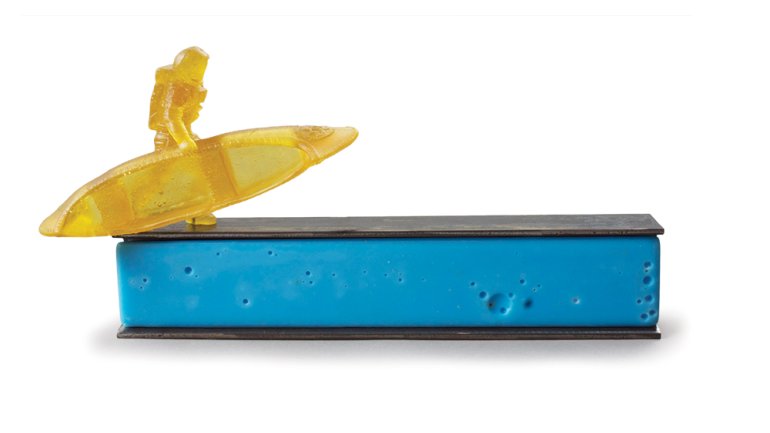Taking Off
Taking Off
For an artist whose work often grapples with today’s hyper-connected world, Jason Chakravarty has left very few cyber-crumbs to mark his trail. He has a website, a few mentions on gallery websites, and one YouTube video.
In fact, he doesn’t even have an account on Facebook, and he’s not interested in Twitter or Instagram. But that’s not a criticism, he’s quick to note. “I’m an avid emailer. I spend two, three, four hours a day emailing,” he says, and he likes the ease and speed of such instant communication. He’s also prey to its addictive qualities, though – “I check my email every five minutes” – and worries that all this so-called communication ultimately fosters a false sense of connection.
“There’s this artificial contentment from knowing that Uncle So-and-So had dinner last night because you read it on Facebook, and knowing you don’t really have to dive further into it” – actually pick up the phone and talk to Uncle So-and-So, much less, say, write him a letter.
Hence the old-fashioned mailboxes that appear in his work. They recall an increasingly obsolete form of communication, where “you have to sit down and write out a full sentence and combine multiple sentences,” an act requiring a reservoir of patience hard to imagine in the shorthand universe of tweeting and texting.
The mailboxes are part of a diverse and evolving vocabulary of recurring images that populate his work: buffaloes, cinderblocks, seashells, canoes, astronauts, and deep-sea divers, among others. He creates them in cast glass and then combines them in intensely personal narrative tableaux. He spent several years enclosing his diorama-like scenes in handblown glass and illuminating them with neon and other noble gases, but his most recent work has pared down considerably.
But as the compositions have grown more spare, they seem even more freighted with meaning – although what exactly is happening can depend on who’s looking. People think he’s a sci-fi fan because of the astronaut, for example. He’s not (though he has nothing against it). Rather, he sees the figure, along with the diver, as an explorer, a traveler into parts unknown.
His work can feel lighthearted, even playful, and the small scale of the objects and figures can seem toylike. They’re not toys, “but if it brings some of that nostalgia from someone’s early years, or just reminds them of something,” he says, “that makes me feel good.”
Chakravarty’s own journey has already taken several turns. The 37-year-old completed an MFA in sculpture at California State University, Fullerton, in 2006. He had found his way to glass through neon sculpture before leaving the medium for a while. He credits brothers Einar and Jamex de la Torre with bringing him back. “Just watching what they did with glass – they’d cut it, tear it, break all the rules – it really opened my eyes up. There was so much information and decisiveness in their imagery; they’re able to reach such a large pool of people with this almost candy-like thing that’s happening in their work.”
Part-time teaching positions and hot-shop jobs have taken him all over the country, most recently to Cincinnati, Ohio.
Now, however, like one of his divers, he’s ready to take a plunge. In February, he left a glass studio in Cincinnati, where he had been director of operations. His plans might include full-time teaching, but he’s also considering a move back home to the Phoenix area. He wants to be closer to family and friends, but he’s also exploring options to buy a building and make a go of working full time in the studio. “I always figured at some point I’d retire from a full-time job and just be an artist. If I’m in a position to do it now, why wait?”
He’s got a full calendar of shows and workshops scheduled, so if the studio pans out, it will take some discipline to get it set up. But, he says, “that’s a good problem to have. I’m really excited to move forward. I’m making art as much as I can.”
Judy Arginteanu is a writer and editor in Minneapolis, and copy editor for American Craft.

